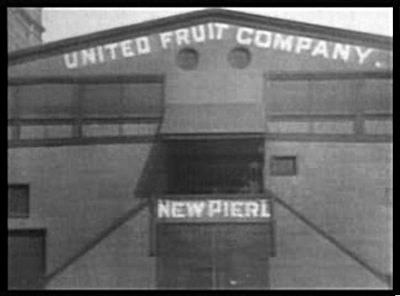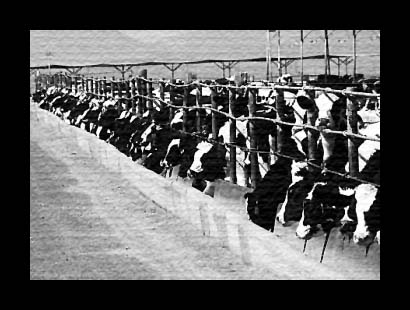
When I think of all the hardy meals I have ever eaten, which I do from time to time, the one that sticks out to me as being the most filling is, 9 times out of 10, meatloaf. Not only is it the most filling food I can think of, but for some reason it makes feel happy when I smell it. Being a meat-lover myself, the thought of having so much meat at once makes me salivate. I can remember while growing up shouting joyous strains to the tunes ‘Row, Row, Row Your Boat’ and ‘Jingle Bells’, substituting meatloaf at the appropriate times. What is it about this simple dish (beef, egg, and bread crumbs) that had such a profound effect on me as a youth, and that now continues to captivate me today?
In searching for my answers, I happened upon a website created by Steven Colbert that helped me form a small picture of the effect that meatloaf has on me. In one section, Colbert said that ‘real’ Americans eat meatloaf at least five times per week.1 While I find this comment facetious, it does point to the fact that many people think meatloaf is a genuinely ‘American’ meal. This reinforces the thought that I have had my whole life. When I think of meatloaf I think of good old farm living: a traditional meal that has always been a mainstay of rural America. Therefore, because meatloaf reflects rural America, and in fact, the original settlements of America were quite literally rural, one can also assume that anything else ‘rural’ should be equated with being ‘Authentically American’.

In thinking about this, I began to wonder if meatloaf had its roots in some other country. What if meatloaf began with the Sumerians, or the Persians? That would destroy what I thought it meant to be ‘American’! I did not want to give up this picture of my identity, so I hesitated in beginning my research of the origins of the dish. Luckily, I got over it quickly, and this is what I found:
 Meatloaf was grouped in a category with meatballs (something I distinctly envision as being Italian) which are referred to as being a ‘diminutive form of meatloaf. The earliest recipes of meatloaf are found in Ancient Roman texts. However, cattle were not even in the top five meats. The top five (starting with number one) were as follows: Peacock, pheasant, rabbit, chicken, suckling pig. Wow! Who would have thought that my American icon ‘meatloaf’ started in Italy? I most certainly did not. The reasons for making the dish served very practical purposes. First, this way of preparing meat made it easier to distribute to more people. Second, it made resources easier to conserve, and finally, the process of grinding the meat made even the toughest meat palatable.2
Meatloaf was grouped in a category with meatballs (something I distinctly envision as being Italian) which are referred to as being a ‘diminutive form of meatloaf. The earliest recipes of meatloaf are found in Ancient Roman texts. However, cattle were not even in the top five meats. The top five (starting with number one) were as follows: Peacock, pheasant, rabbit, chicken, suckling pig. Wow! Who would have thought that my American icon ‘meatloaf’ started in Italy? I most certainly did not. The reasons for making the dish served very practical purposes. First, this way of preparing meat made it easier to distribute to more people. Second, it made resources easier to conserve, and finally, the process of grinding the meat made even the toughest meat palatable.2
The process of creating meatloaf involved the grinding of meat and then mixing it with bread products, spices, sauces, and other thickeners. Although the first recipe book containing it was found in Rome, many other ancient cultures endorsed the same process. For example, there was Kofta: “The term for a meatball or small meat patty which may be round, oval, or sausage-shaped and large or small. They can be grilled (broiled), fried or baked, served plain or simmered in a sauce. Dishes of this type are made in North Africa, in Mediterranean countries, through Central Europe, Asia and India. Kofta is the general term and the one commonly used for Indian dishes, but a variety of names are sued...Whatever the name, the mixture is likely to be finely minced (ground) meat, mixed with onions and spices."3
The point I am trying to make here is simple. Meatloaf, in its original form, at least, is most definitely not ‘American’. However, I did find a loophole in this argument. A study done by a private company in Turkey in 2005 found that there are 291 different kinds of Kofta. There are also many variations in the Middle East, Asia, Africa, and in the Americas. This could mean only one thing: with each of these places having their own unique variation (most places have numerous types) of meatloaf, then there must be one that is distinctly American. My next step was to find out the history of the American Meatloaf.
 American meatloaf’s roots can be found in the 19th century, originating with the Industrial Revolution. The mechanical meat grinder was created in the 1860s.4 This device was created to grind the meat which was then sold to the American public at a very low cost (An Industrial Revolution Trademark I might add). At first, however, Americans were slow to purchase the meat. They eyed it suspiciously (possibly because of the lack of refrigeration at the time), so it wasn’t taken seriously until the turn of the 20th century when the meat grinders were being sold to individual consumers while the sellers of the grinders were pairing recipes to go with them, in an effort to sell the meat.5 After that, the rest became history. Meatloaf became popular, and actually reached its peak in popularity in the 50’s (This is when most processed foods gained landslide popularity in the US, thanks to the war-time technology that needed to be used for something. How Ironic!).
American meatloaf’s roots can be found in the 19th century, originating with the Industrial Revolution. The mechanical meat grinder was created in the 1860s.4 This device was created to grind the meat which was then sold to the American public at a very low cost (An Industrial Revolution Trademark I might add). At first, however, Americans were slow to purchase the meat. They eyed it suspiciously (possibly because of the lack of refrigeration at the time), so it wasn’t taken seriously until the turn of the 20th century when the meat grinders were being sold to individual consumers while the sellers of the grinders were pairing recipes to go with them, in an effort to sell the meat.5 After that, the rest became history. Meatloaf became popular, and actually reached its peak in popularity in the 50’s (This is when most processed foods gained landslide popularity in the US, thanks to the war-time technology that needed to be used for something. How Ironic!).
That means that the same things that drove me to eat Hot Pockets have driven me to eat meatloaf (when I received this epiphany, I cried). I was duped by food conglomerates to eat something I deemed to be pure American, though it didn’t even exist 100 years ago! I have fallen into the trap that Raj Patel mentions (me being made for my food) with something I considered to be home-made!6
I suppose that my surprise was understandable, especially since America was founded on being democratic, as well as bringing in the best of everything from the rest of the world. I must therefore accept that meatloaf was something brought to America because it was totally awesome, and that by entering the “Land of the Free and the Home of the Brave” meatloaf became America (all because advertisers decided it would be a great seller, which it was).
 It is up to me to decide, now knowing what I know about my favorite meaty platter, if meatloaf should still be considered a part of my identity and heritage. Whether I like it or not, meatloaf has always been a part of my life. I cannot dismiss it on a whim, and yet this is not what anyone should do. Thoughtful deliberation and skepticism need to be applied here.
It is up to me to decide, now knowing what I know about my favorite meaty platter, if meatloaf should still be considered a part of my identity and heritage. Whether I like it or not, meatloaf has always been a part of my life. I cannot dismiss it on a whim, and yet this is not what anyone should do. Thoughtful deliberation and skepticism need to be applied here.
There is a lot of thought that should go into the foods we eat. Questions like ‘Where it comes from?’ and ‘Why I eat it?’ should be asked for any of the foods I consume. When I have asked myself these questions, and then come up with satisfactory answers (one-liners like because it tastes good should definitely be looked at a little deeper) is when I will be in control of the things that I eat. As for meatloaf here is what I have to say:
Meatloaf (the beef kind) comes from a cow. That cow gave its life so that someone like me could eat. It was then ground up and packaged, and sent to the local Safeway to be purchased by a consumer. I purchased the meat, took it home, and then seasoned it and stuck it in the oven to roast. There I left it to bake until it resembled what I considered to be perfection. Then I consumed it, bite by meticulous bite, until my hunger was appeased. Why did I eat it the loaf? The aroma, taste, and appearance all fit together to create the ultimate meal, prepared of course, by myself. I know after answering these questions that I was able to say, with clear conscious, at least with regards for meatloaf, my food was made for me.
[1] Wikiality.com
[2] http://www.foodtimeline.org/foodmeats.html#meatloaf
[3] Larousse Gastronomique, completely revised and updated edition [Clarkson Potter:New York] 2001 (p. 656)
[4] http://digital.lib.ucdavis.edu/projects/food/panel6.html
[5] http://www.foodtimeline.org/foodmeats.html#meatloaf
[6] Patel, Raj. “Stuffed and Starved”. Page 253. Portobello Books Ltd. London: 2007











